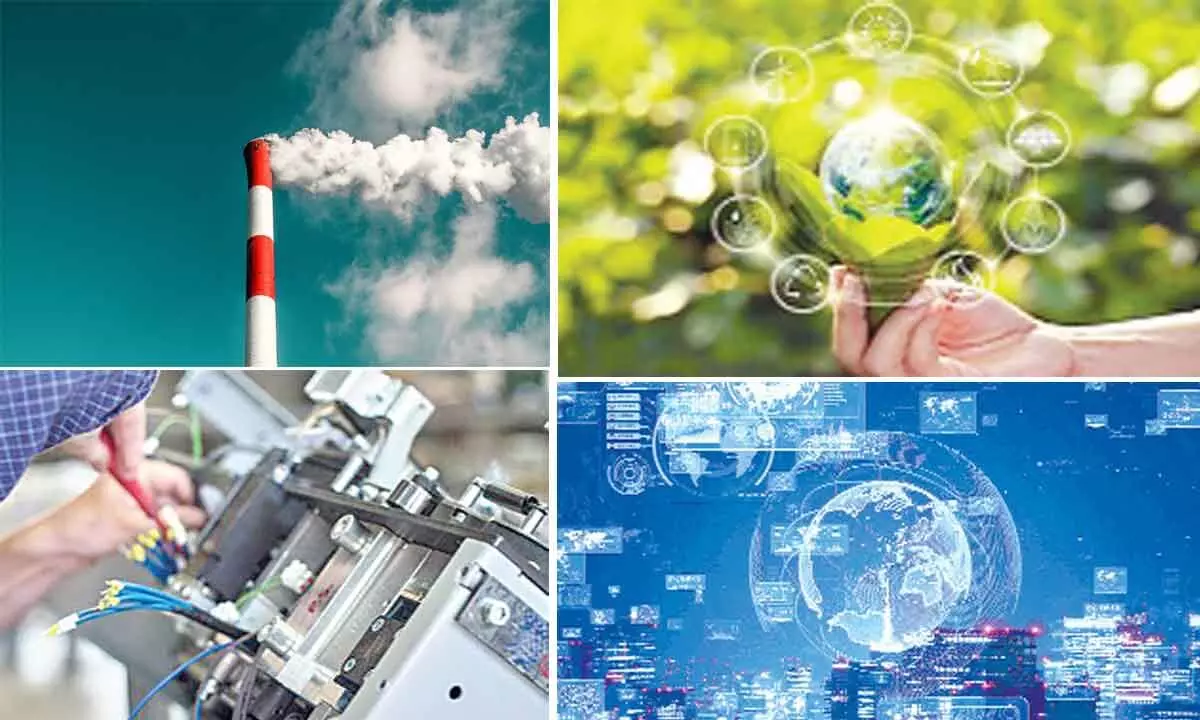Technology-based solutions to combat air pollution

Our globe has changed significantly in the last ten years due to global warming and severe weather changes.
Our globe has changed significantly in the last ten years due to global warming and severe weather changes. Government authorities state that in overall 122 years, this April was the third-warmest month India has ever seen. Still, the way every year's temperature is leveling up, we know this won't remain the warmest.
One of the most significant contributors to climate change is air pollution. With the rapid rise in industrialisation and urbanisation, pollution has increased the toxicity in the air to lethal levels.
Innovative and evolving technologies can be an effective tool to combat air pollution. Throughout time technology has revolutionised the globe and our everyday lives. Technological developments have already impacted every facet of our daily life, and undoubtedly, technology has enabled us to thrive in a life our ancestors could only envision. India needs to lessen pollution and brace for unforeseen changes in our daily practices for better air quality.
One of the most appropriate innovations is air monitoring stations. According to reports, India needs at least 4,000 air monitoring stations to keep records of the country's air quality, and it appears India lacks a substantial number for the same. We must comprehend the underlying causes of air pollution and raise awareness to help eliminate it effectively. The state can thoroughly examine the air quality—including emissions from traffic, chimneys, burning garbage, etc.—through new sustainable tech-driven solutions. Here are a few adaptable technologies that can lead to a sustainable and greener future:
Devices for monitoring pollutants
India must employ a hybrid method that combines satellite monitoring with low-cost sensors to measure a region's exposure to pollution and use its real-time monitoring network to spot long-term trends and patterns of pollutants. Despite not directly removing or reducing air pollution from the environment, this technology is vital in managing air pollution. This tool is crucial in detecting the emission area and limiting the contaminants. Additionally, it retains the time and financial burden of monitoring ambient pollution.
(The author is the Co-Founder & Director, Pi Green Innovations)
Retrofit
We must be aware that vehicles and heavy vehicles are responsible for 27 per cent of overall pollution, and India can no longer fail to observe this grave danger facing its residents. One of India's most important sources of air pollution is the release of combusted air from vehicle exhaust.
As a solution, vehicles can be equipped with retrofit emission control devices that assist in lowering and filtering exhaust emissions to reduce 70 per cent to 90 per cent of the toxicants thrown into the air. According to health professionals, diesel engine pollution pose a significant health risk to residents.
Heart disease, lung cancer, asthma, stillbirth, neonatal death, and deadly congenital defects are all linked to long-term exposure, so adapting such technologies can favor well-being.
Explore newer technologies to make crematoriums sustainable
The National Green Tribunal recently recommended that cremation be performed with gas or electricity rather than wood. In recent years, especially after the dreadful Covid crisis and the massive increase in the number of cremations, crematoriums have been a major source of pollution.
Another alternative for reducing the human footprint on the environment is to choose greener cremation in crematoriums by having effective and sustainable after treatment solutions to reduce emissions.
Our cities face an air pollution emergency almost every winter because of burning crop waste and smoke. Hence, there is a need to stabilize air quality with new initiatives and practices. The recent turnaround in pollution levels in New Delhi and UP has compelled us to focus on green technologies that can help curb pollution at source.
Power of AI and IoT
With the development of IoT and AI, modern technologies have the potential to help address air pollution. It can aid in detecting the source of air pollution, the creation of legislation, forecasting, and problem-solving. It is crucial to evaluate the air quality in detail, which includes factors like traffic, burning trash, construction, allocating industrial sources, population density, and current air monitoring infrastructure along with satellite data.
Here, AI can be enforced to utilize the above aspects to estimate a geospatial interpolation of air quality data correctly. With this method, high-resolution real-time coverage will be distributed.


















